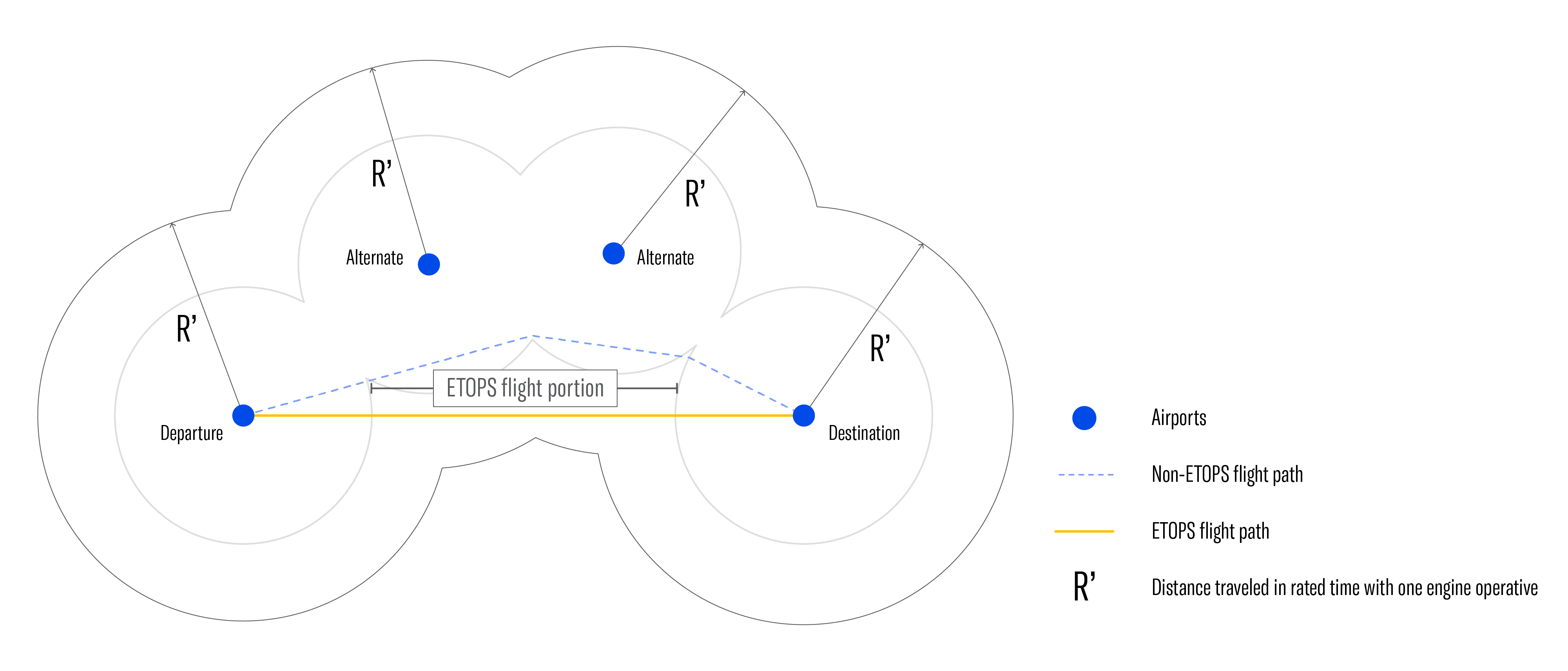Our E2s just keep getting better! We now have approval from ANAC, Brazil’s aviation regulatory authority, to fly the E190-E2 and E195-E2 under ETOPS 120 rules. This doubles the 60-minute ETOPS limit under which the aircraft were previously operating.
We had hoped to get the approval earlier, but we needed more time to accrue the 125,000 flight hours of field data required by FAA Title 14 CFR Part 25 Appendix K, which governs Extended Twin Engine Operations. It took us longer to accumulate the worldwide E2 fleet flight hours because airlines had reduced their schedules during the pandemic. We expect ETOPS 120 certification from the FAA and EASA in the coming months. Those approvals typically follow ANAC.
What is ETOPS?
If you aren’t familiar with ETOPS, it’s an ICAO acronym for twin-engine aircraft flying further than one hour from a diversion airport with one engine inoperative at cruise speed over water or remote land. Now, with ETOPS 120, that diversion time is extended to two hours. Each E2 had some modifications. For example, the cargo fire suppression system was redesigned to comply with the longer diversion time. In fact, the E2s exceed the certification requirements by 15 minutes.
New benefits for our E2 customers.
Airlines wanting to fly their E2s on routes where there are few or no 60-minute alternates, such as over vast deserts like the Sahara or forests like the Amazon, will really benefit from ETOPS 120 certification. Longer overwater sectors are now possible, too. This is particularly attractive in the Asia Pacific region. Simply put, E2 operators can now fly routes that are two hours from a diversion airport. That means airways distance is shorter. And a shorter sector saves time, fuel, and money. Routes that were once unattractive or operationally not viable are now feasible. This opens the door to new nonstop services.
Here’s a graphic that shows the straight line, shorter-distance flight path under ETOPS.

ETOPS 120 is yet another example of how we’re continually improving the E2 experience for our customers and their passengers.

